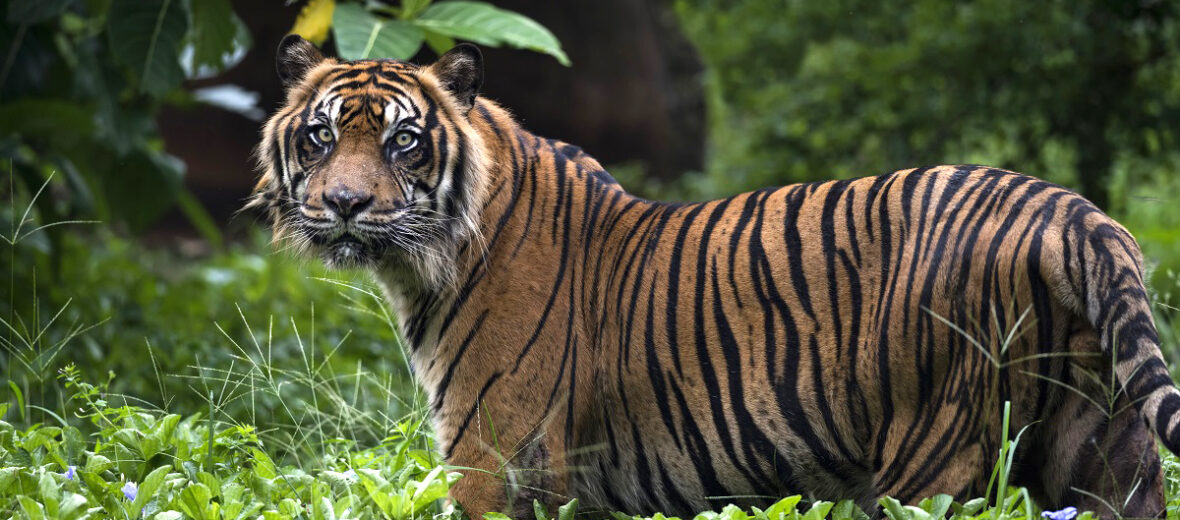
The Sumatran tiger hails only from the Indonesian island of Sumatra. They are the only remaining tiger species on the Sunda islands. They prefer rugged montane forests and lowland peat swamp forests at higher elevations. These big cats tend to steer clear of human settlements, for good reason. Due to habitat loss and destruction at the hands of deforestation from the acacia and palm oil plantations; hunting; trapping; and anthropogenic climate change (causing the increase in greenhouse gas emissions), these beautiful big cats are listed as Critically Endangered by the IUCN. They numbered only an estimated 800+/- individuals back in 2017. Their numbers are also decreasing.
First the Stats…
Scientific name: Panthera tigris sumatrae
Weight: Up to 300 lbs.
Length: Up to 12 feet, including their tail
Height: Up to 29.5 inches
Lifespan: Up to 15 years
Now on to the Facts!
1.) The Sumatran tiger is considered the smallest of the tiger species.
2.) Like other tiger species, they are solitary and only come together to mate or if there is an abundance of food.
3.) The males of this species keep a large territory that overlaps the territory of surrounding females.
4.) While typically nocturnal (active at night), they have also been documented hunting during the daytime.
5.) Being like many other feline species, they are ambush predators that typically get as close to their prey as possible, from behind or from the side, and then attack; biting the neck and severing the spine.
But wait, there’s more on the Sumatran tiger!
6.) Prey items are dragged up to several hundred feet to a secure location before consuming as much of it as possible.
7.) Like other tigers, they are strong swimmers. They often swim in rivers, lakes, and streams to keep cool in the summer months.
Did you know…?
Their roar can be heard up to 1.9 miles away!
8.) These tigers produce a moaning sound when stressed. When upset, they will make growls, hisses, and snarls. Chuffing is a sound produced when they are content. They also make other sounds like grunts, meows, and woofs.
9.) They prey mainly on Malayan tapirs, banded pigs, great argus, pig-tailed macaques, mouse-deer, Malayan porcupines, Indian muntjac, and Sambar deer.
10.) Females undergo up to a 103 day gestation (pregnancy) that yields up to 7 cubs.
But wait, there’s still more on the Sumatran tiger!
11.) Cubs are born altricial (blind and helpless).
12.) The cubs will take up to 3 years to become independent.
Now a Short Sumatran Tiger Video!
Be sure to share & comment below! Also, check out the Critter Science YouTube channel. Videos added regularly!
Want to suggest a critter for me to write about? Let me know here.
Some source material acquired from: Wikipedia and IUCN
Photo credit: International Tiger Project



